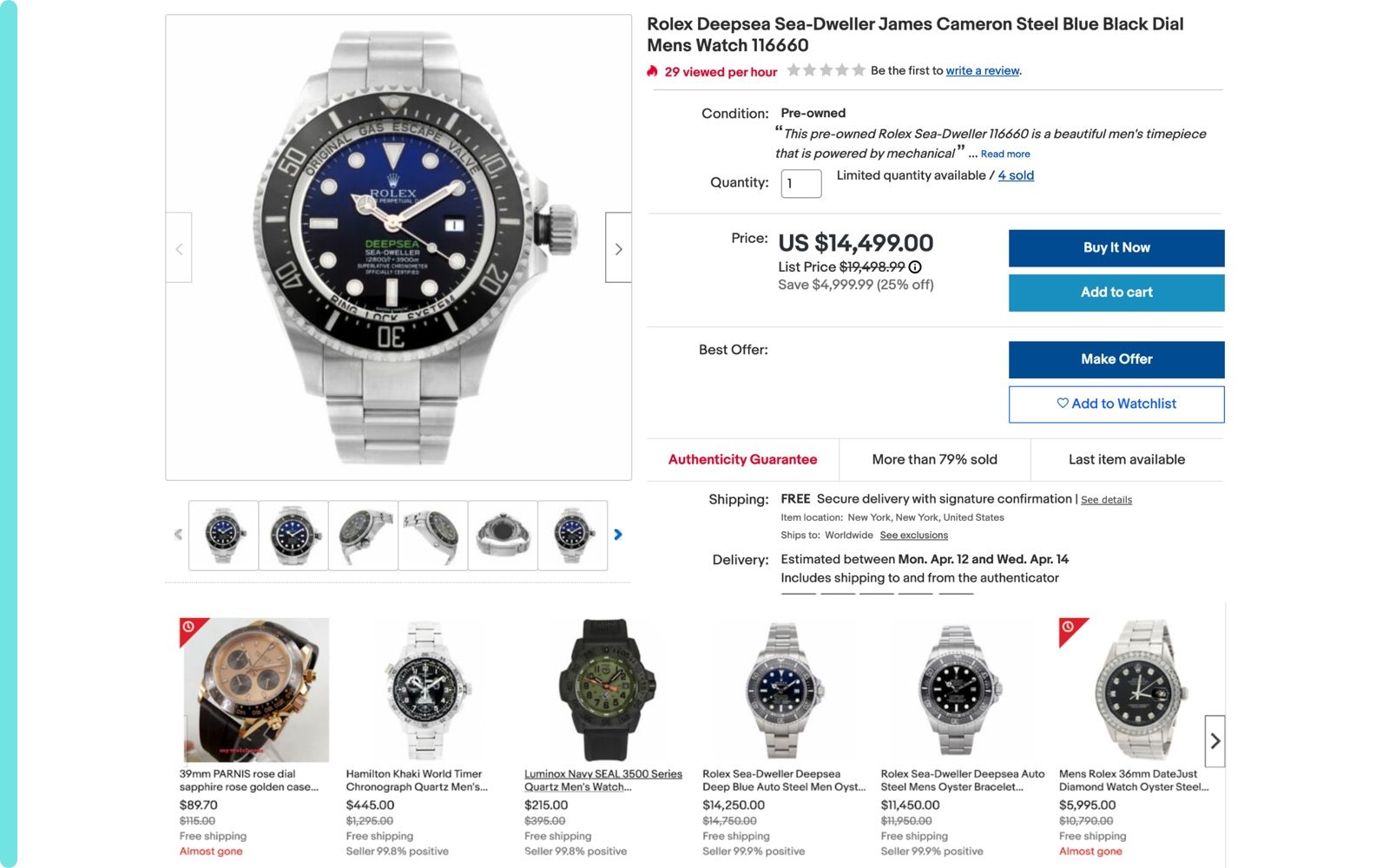eBay Tech Focuses On Relevance For Similar Sponsored Items
The eBay Tech blog has an interesting new post about testing they are doing around “relevance” in shopping recommendations.
Previously, eBay used sales popularity as a major factor for recommendations, including “similar sponsored items”.
When shoppers come to eBay, our goal is to help them easily find a product they’ll love.
Over the past year, our teams have focused on how we can improve item recommendations for buyers that are more relevant and aligned to their shopping interests.
Under our previous recommendations model, products were displayed for customers on the eBay marketplace — including the “Similar Sponsored Items” strip on an item listing page — based on their sales popularity.
As the name suggests, “Similar Sponsored Items” recommends similar items with respect to the main item on the page, which we call the “seed” item.
Customers had received recommendations that were powered by a machine learning model; however, there were occasional cases where the recommended items didn’t quite match the seed item.
For instance, in the screenshot below, the top three recommended watches for a $14,500 luxury wristwatch are different in item title, appearance, brand and price range. Such recommendations are most likely not aligned with shoppers’ interest who land on the luxury wristwatch page.
Among all the features, we noticed that many top important features belong to the popularity feature group, which means popular items are likely to get better ranking than some of the relevant but not popular items (e.g. new items without a sales history)…
…To improve recommendation relevance, we built a relevance model and applied it as a filter to remove less relevant candidates and only funnel the relevant candidates into the ranking model.
The blog gets pretty technical and may not be particularly interesting for the non-technical crowd, but the end result of the test is interesting.
Now, let’s revisit the case of wristwatches. The recommended items by the relevance cascade model are much more similar to the seed item in title, appearance, brand and price range.
This is a clear demonstration that it is important to first select the relevant candidate items, and only then apply a ranking model optimized for conversion, as our relevance cascade model does.
What does this mean for buyers and sellers?
One one hand, for buyers who know exactly what they want, this could be an improvement by showing only the most highly relevant nearly identical items.
For sellers, that could mean increased pressure for race to the bottom pricing as the only way to stand out in this type of recommendation model. It could also mean ad rates continuing to ratchet up as the competition for those “Similar Sponsored Items” slots heats up.
But is eBay possibly making an error that Amazon has made before them? As marketplaces refine search and recommendations to be more precise and narrow, are they missing out on opportunities for browsing and discovery?
Jeff Sward of RetailWire makes an interesting point about the distinction between buying and shopping – one that eBay may want to consider when tweaking the recommendation ML.
Right! What’s the expression…? Amazon won buying but ruined shopping. Buying (and delivery) of Knowns is completely different than shopping for Unknowns. Stay tuned for Amazon Style, their next learning experiment.
— Jeff Sward (@SwardJeff) March 29, 2022
Back in October when eBay completely upended the structure of many categories, sellers in collectible and hobby categories in particular felt eBay was missing an important distinction between searchers and browsers.
Searching with specific keywords works when you already have a good idea of what you want. If I’m looking to buy a gaming system for example, odds are I’ve already decided on which one I want and am just trying to find the best price, fastest delivery, highest rated seller, etc. In that case, entering the exact phrase of what you are looking for makes sense and returns mostly relevant results.
However, many buyers don’t necessarily come to eBay with a specific item in mind to search for. They simply want to browse within their particular category of interest to see if anything new and interesting has been listed for sale.
Once a buyer clicks through to a listing, it’s easier to say they are likely looking for “similar” items to that listing, but there’s a fine line between “similar” and “same” and that line may not exist in the same place for all categories/product types.
The examples used in that blog post are watches, boots, and headphones – all categories where buyers may be more likely to be looking for specific, narrower results.
Hopefully eBay is carefully A/B testing this new methodology across a wide variety of categories and considering whether it’s the best fit for specific types of items.
Sellers are already growing tired of strategies that are focused almost exclusively on a few chosen verticals, excluding others. One size fits all recommendation models that narrow results across the platform could exacerbate the issue.
What do you think of eBay’s relevance model test results as a buyer or seller? Do you prefer tighter, more narrowly defined nearly identical results or a broader definition of “similar”? Let us know in the comments below!

















![Toni Kroos là ai? [ sự thật về tiểu sử đầy đủ Toni Kroos ]](https://evbn.org/wp-content/uploads/New-Project-6635-1671934592.jpg)


